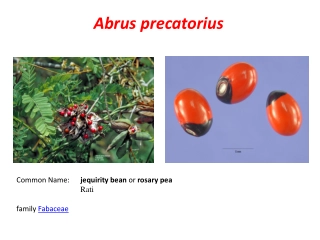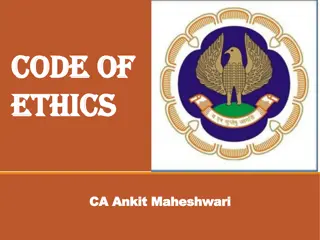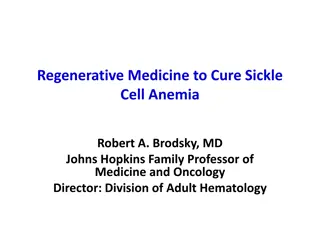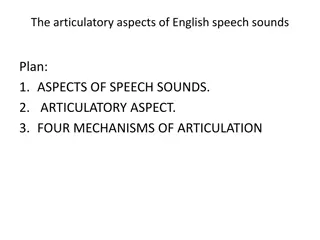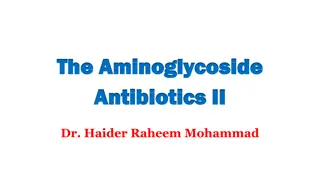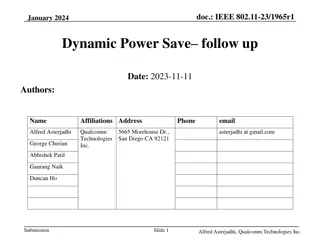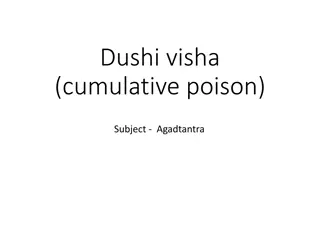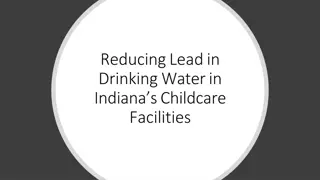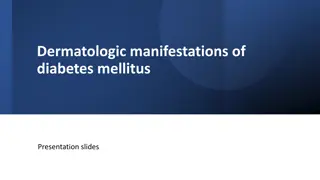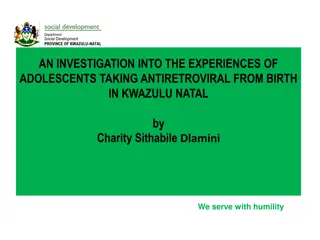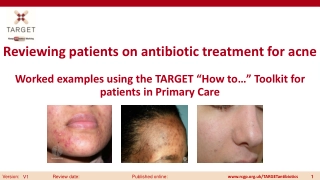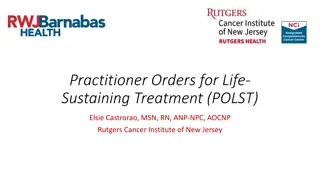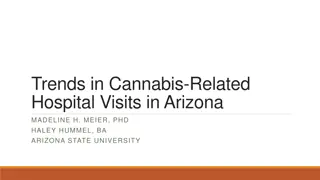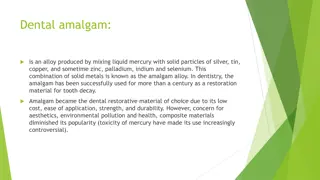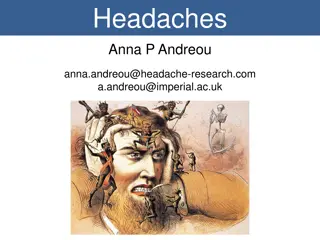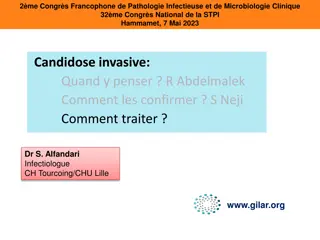Understanding Acetaminophen Poisoning: Mechanism, Toxicity, and Treatment
Acetaminophen poisoning occurs when the body is overwhelmed by high doses of the drug, leading to liver toxicity and potentially fatal consequences. The mechanism of toxicity involves the depletion of glutathione and the formation of a harmful metabolite, N-acetyl-para-benzoquinoneimine (NAPQI). Conditions such as CYP induction, GSH depletion, liver disease, and certain health disorders can increase the risk of toxicity. Recognizing the stages of acute acetaminophen toxicity is crucial for prompt treatment, which includes using activated charcoal and administering antidotes like N-acetylcysteine and methionine to replenish hepatic glutathione.
Download Presentation
Please find below an Image/Link to download the presentation.
The content on the website is provided AS IS for your information and personal use only. It may not be sold, licensed, or shared on other websites without obtaining consent from the author. Download presentation by click this link. If you encounter any issues during the download, it is possible that the publisher has removed the file from their server.
Presentation Transcript
Acetaminophen Poisoning Lab 7
Acetaminophen Poisoning Acetaminophen Poisoning Acetaminophen or N-acetyl-p-aminophenol (paracetamol), also called Tylenol, mapap and panadol is analgesic, antipyretic and have weak anti-inflammatory effect. Exerts its effects through the inhibition of cyclo-oxygenase (COX). COX catalyses the formation of prostaglandins (PGs) and other mediators that are important in the processing and signaling of pain and control of the thermoregulatory center of the brain. Oral acetaminophen has excellent bioavailability. Peak plasma concentration occur within 30 to 60 minutes. The half-life in plasma is about 2 hours after therapeutic doses.
Therapeutic dose is 10-15 mg/kg. Toxic dose: More than 7.5 gm (around 15 tablets) minimal toxicity, severe liver toxicity if > 15gms (30 tablets). In adults toxic dose is 150mg/kg. In children under 12 years toxic dose is 200mg/kg. In the presence of chronic liver disease or malnutrition, even 2g can be a toxic dose.
Mechanism of Toxicity Mechanism of Toxicity When the dose of paracetamol is high. The glucuronide and sulfate conjugation pathways become saturated, and increasing amounts undergo CYP-mediated hydroxylation to form N-acetyl-para- benzoquinoneimine (NAPQI). Eliminated rapidly by conjugation with glutathione (GSH) and then further metabolized to a mercapturic acid and excreted into the urine. in acetaminophen overdose, hepatocellular levels of GSH become depleted. The highly reactive NAPQI metabolite binds covalently to cell macromolecules, leading to dysfunction of enzymatic systems and structural and metabolic disarray. Depletion of intracellular GSH renders the hepatocytes highly susceptible to oxidative stress and apoptosis. Binding covalently to cellular proteins, causes cell death
Conditions of CYP induction (e.g. heavy alcohol consumption, those on anticonvulsant drugs). Condition of GSH depletion (e.g. fasting or malnutrition). With pre-existing liver disease. Those suffering from anorexia nervosa and other eating disorders & HIV infection
Stages of acute acetaminophen toxicity Stages of acute acetaminophen toxicity
Treatment Treatment 1) Activated charcoal may be used in patients presenting within 1 hour. 2) Antidotes for paracetamol poisoning a. N-acetylcysteine (NAC) b. Methioinine Act by replenishing hepatic glutathione and N-acetyl cysteine may also repair oxidation damage caused by NAPQI.
Procedure 1. Mix 1 mL of specimen (victim or control urine, water blank) and 1 mL of concentrated hydrochloric acid. Heat at 100C for 10 min. 2. Cool and add 100 L of the above solution to 10 mL of o-cresol reagent and then 2 mL of ammonium hydroxide, 4 mol/L. Urine - use HCl . -Plasma can be enzymatically converted. Addition of copper sulfate improves color. Result: Acetaminophen is hydrolyzed to p- aminophenol, which reacts with o-cresol and ammonium hydroxide to form an indophenol blue chromogen.



